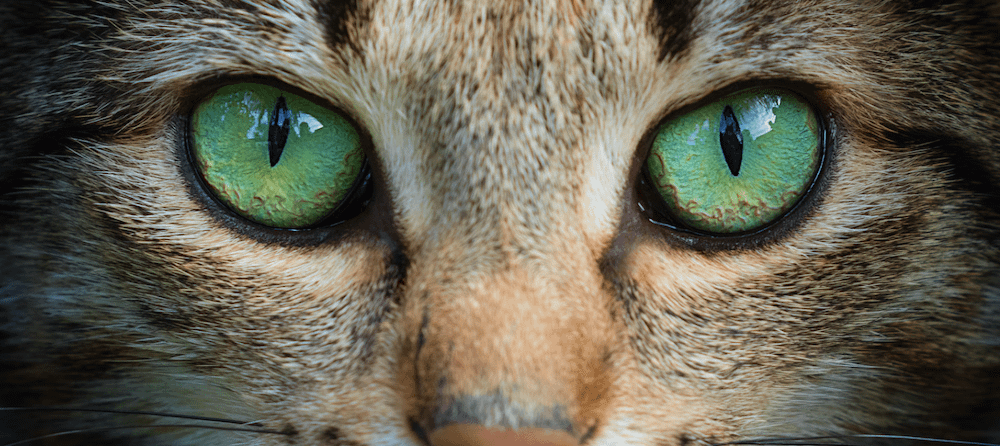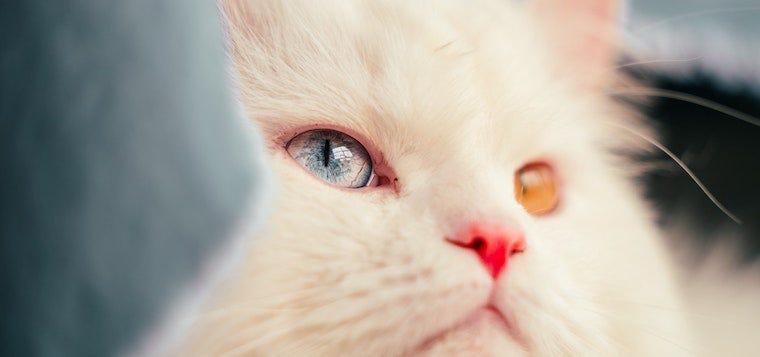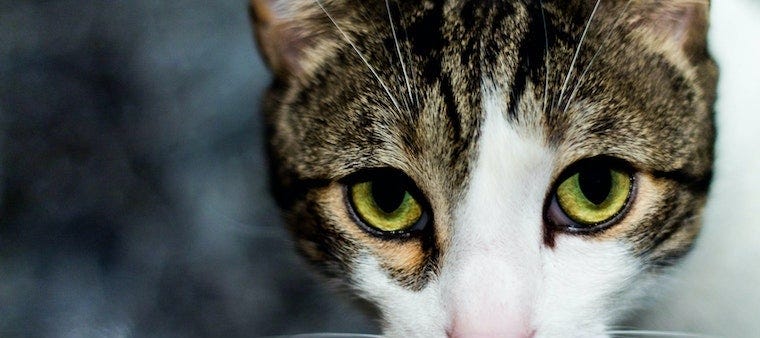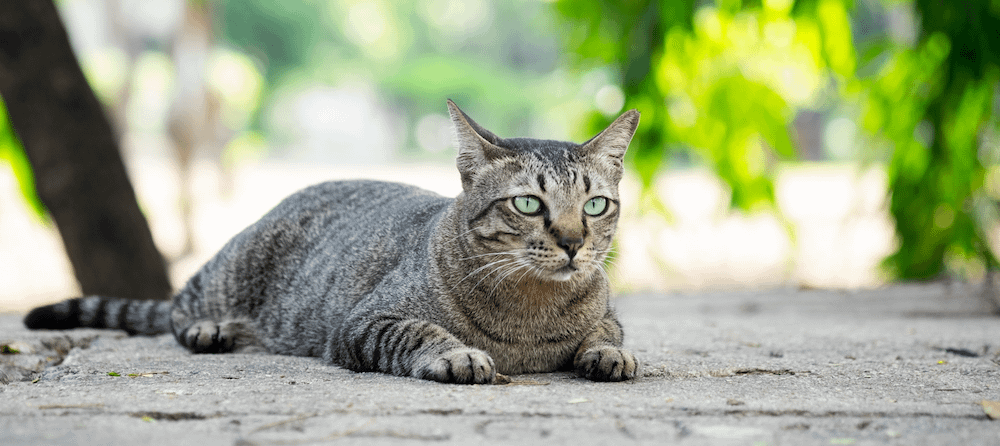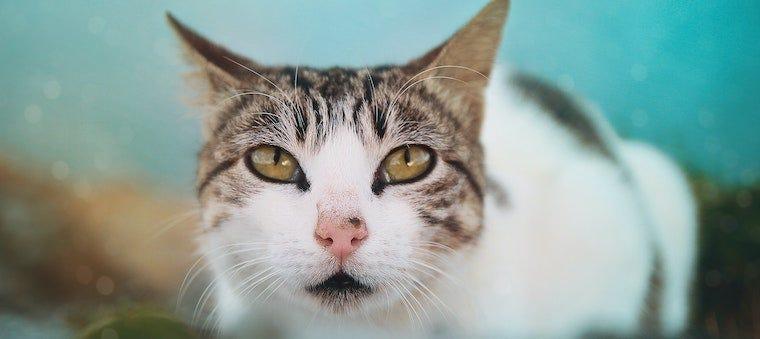There’s nothing quite so mesmerizing as cat eyes. While cats are generally considered mysterious creatures, their emotions, moods, and even physical ailments are often revealed through their expressive gaze.
Perhaps most beguiling about our feline friends is the impressive array of cat eye colors that exist. Sparkling sapphire, shimmering gooseberry green, vibrant golden yellow, and luminous orange are just a few of the cat eye colors you might see.
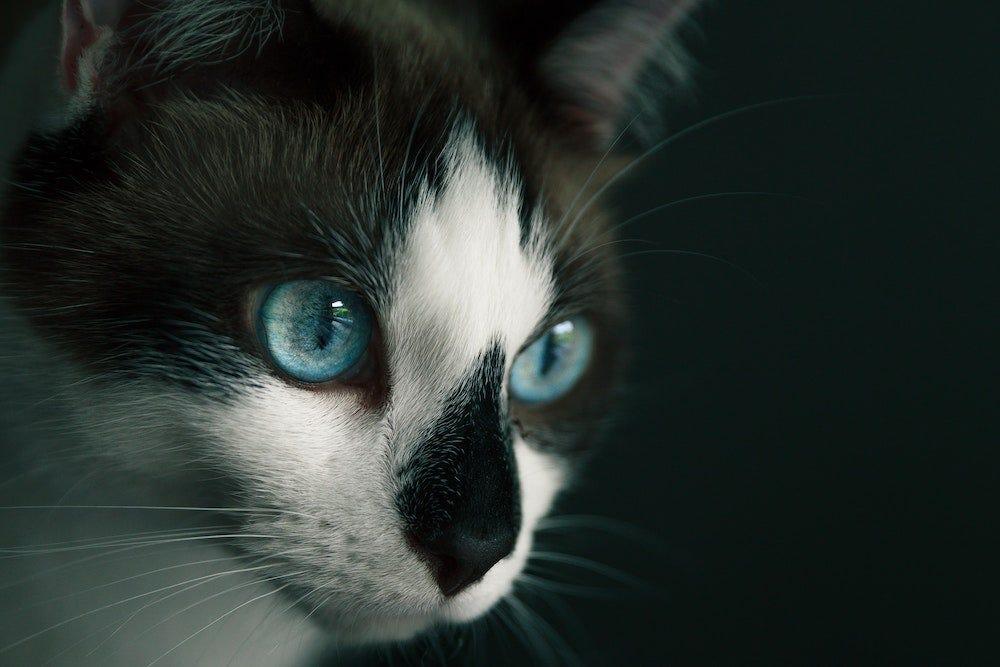
Facts about cat eye colors
Rarity
Cats with yellow/orange eyes are the most common, representing an estimated 50-60% of the population. Second, cats with green eyes are estimated to represent 10-15% while blue-eyed cats represent approximately 3-5% of the population. Finally, cats with two different eye colors, or heterochromia, represent less than 1% of the cat population.
What causes different eye colors
A cat’s eye color depends on the amount of melanocytes in the eye, or melanin-producing cells. These determine the type and intensity of pigmentation that is in the front and rear of the iris.
- High levels of melanocytes in cat eyes may result in orange or gold eyes.
- Low levels of melanocytes typically result in green or yellow eyes.
- A total lack of melanocytes results in blue or pink (albino) eyes.
Cat eye color and breed
Cat eye color is often related to breed, but not necessarily to coat color. The exception here might be cats with white fur and blue eyes—but that is because cats with this combination of traits tend to be purebred.
Purebred cats usually have more intense eye colors than mixed or “moggy” cats. Non-pedigreed cats like Domestic Shorthairs, Domestic Longhairs, and other mixed breeds typically showcase paler shades of yellow, green, or even hazel eye colors.
Are all cats born with blue eyes?
The evolution of your cat’s eye color may be similar to your own: Like some people, kittens are born with blue eyes that usually change to another color as they mature and develop pigmentation. You’ll start to see the changing color between 4 and 6 weeks old and their final eye color by 2 to 4 months.
Why do cat eyes glow?
Cats possess an iridescent tissue layer behind the retina known as the tapetum lucidum. Light bounces off the tapetum and reflects back into the cat’s eyes, which results in the reflective glow you see at night or in flash photography.
The tapetum lucidum is one of the reasons why cats see much better in low-light conditions than humans.
Cats with blue eyes
Although all kittens are born with blue eyes, some cats remain blue-eyed for life. Blue eyes result from a lack of melanin in the iris. This means the blue color you think you’re seeing is actually just the hue caused by light reflecting off the curved sides of the iris.
Below are a few cat breeds known for their vivid blue eyes. You’ll notice many of them have white fur—that is because the same gene that codes for lack of melanin in the coat can result in lack of melanin in the eyes.
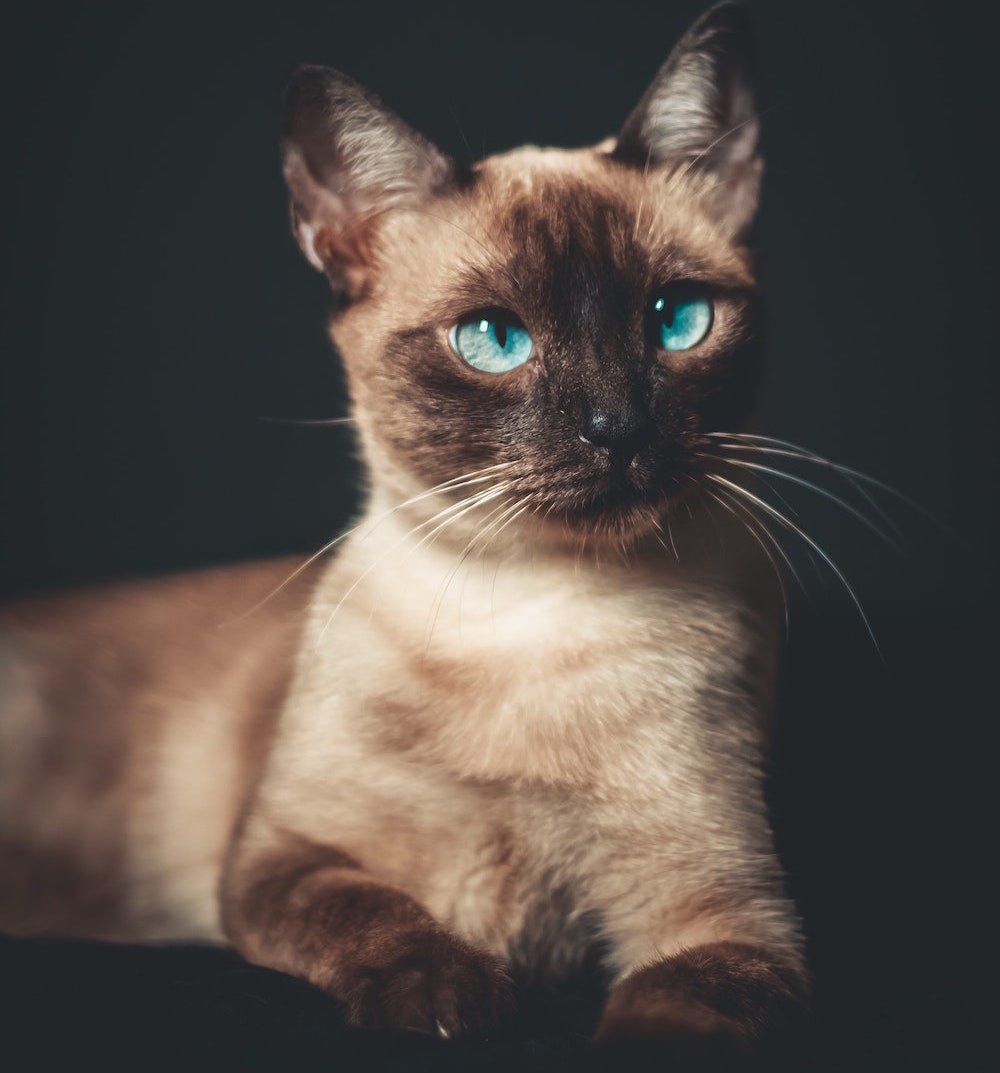
The Siamese cat is known for their colorpoint coat, blue eyes, and vocal personality. This ancient breed originated in Siam (modern-day Thailand). These cats often used to be born cross-eyed, but that trait was mostly bred out over a long period. Still, their vision is somewhat lacking.
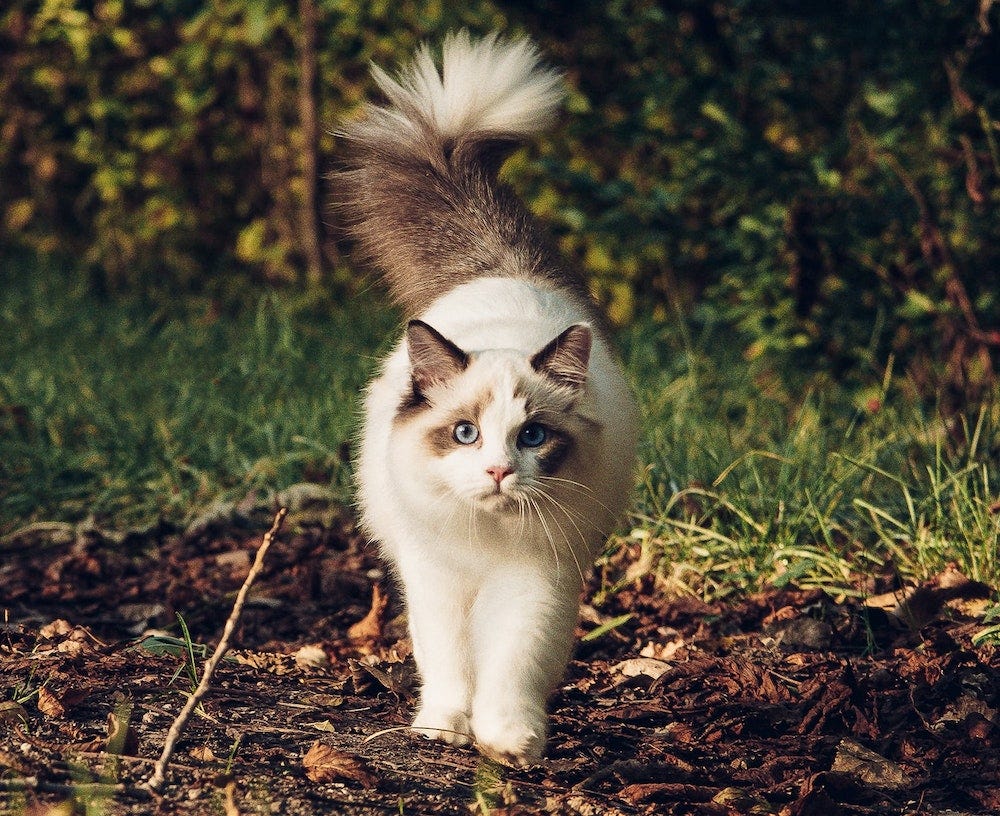
The Ragdoll cat is a fluffy colorpoint cat with striking blue eyes. This breed, created in the 1960s in California, is known for their incredibly loving, cuddly nature. They can be surprisingly large cats, weighing up to 20 pounds.
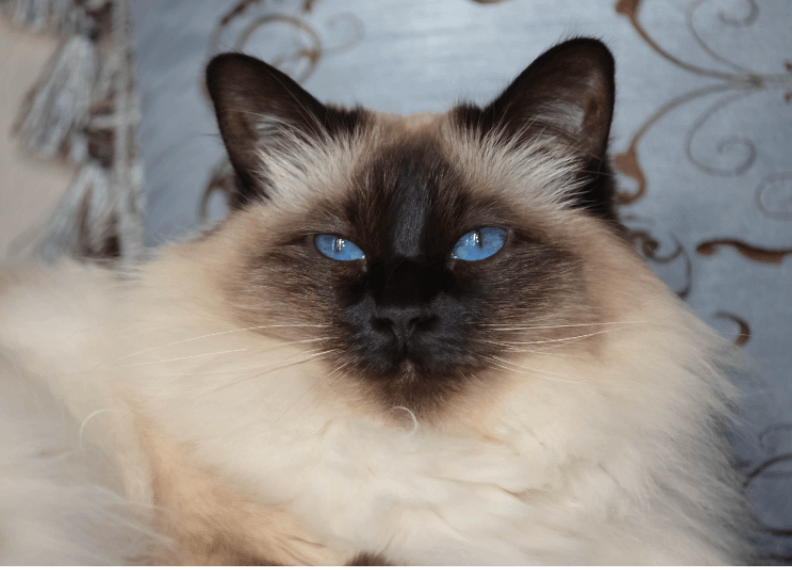
The lovely Balinese cat is considered a long-haired version of the Siamese. Indeed, the Balinese inherited some Siamese traits, like colorpoint fur, vivid blue eyes, and a loving yet demanding personality. The Balinese is considered hypoallergenic while the Siamese is not.
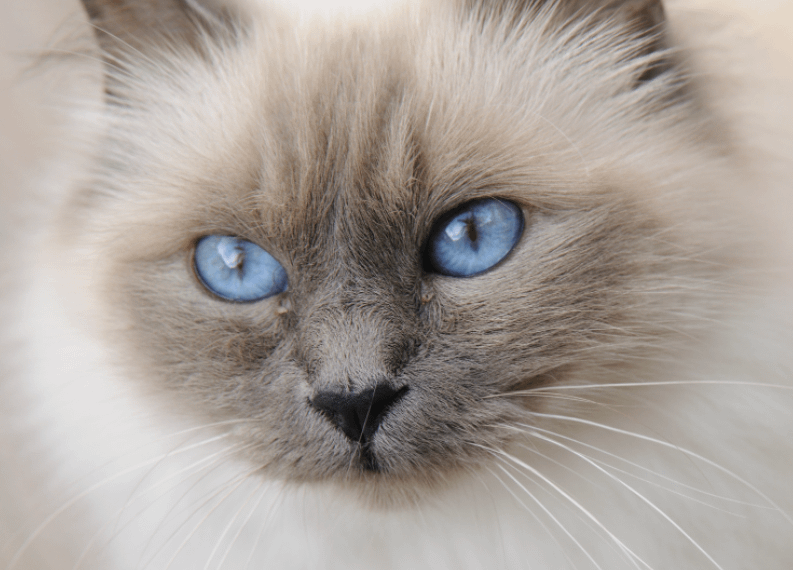
Known as “the Sacred Cat of Burma,” the ancient Birman cat breed was once a companion to temple priests in northern Burma (present-day Myanmar). Legend has it that this beautiful, semi-longhaired cat acquired their deep sapphire eyes from a blue-eyed goddess.
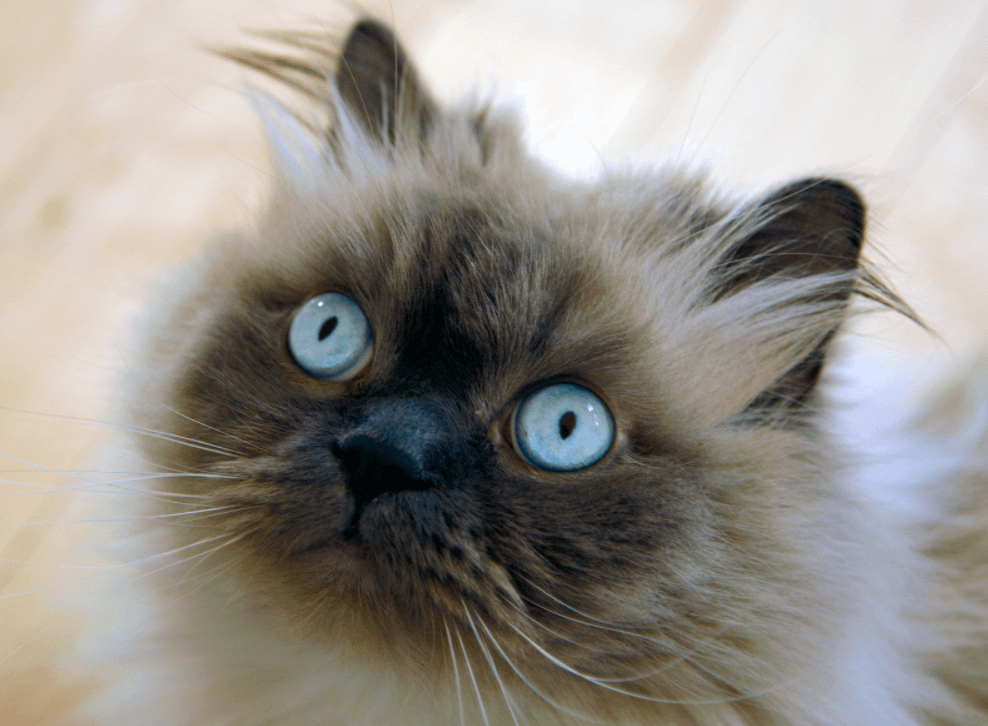
The Himalayan cat is a hybrid breed that gets their long, silky fur from the Persian and pointed coloring with blue eyes from the Siamese. In personality, these sweet, docile cats are a happy medium between the Persian’s inactivity and the Siamese’s hyperactivity.
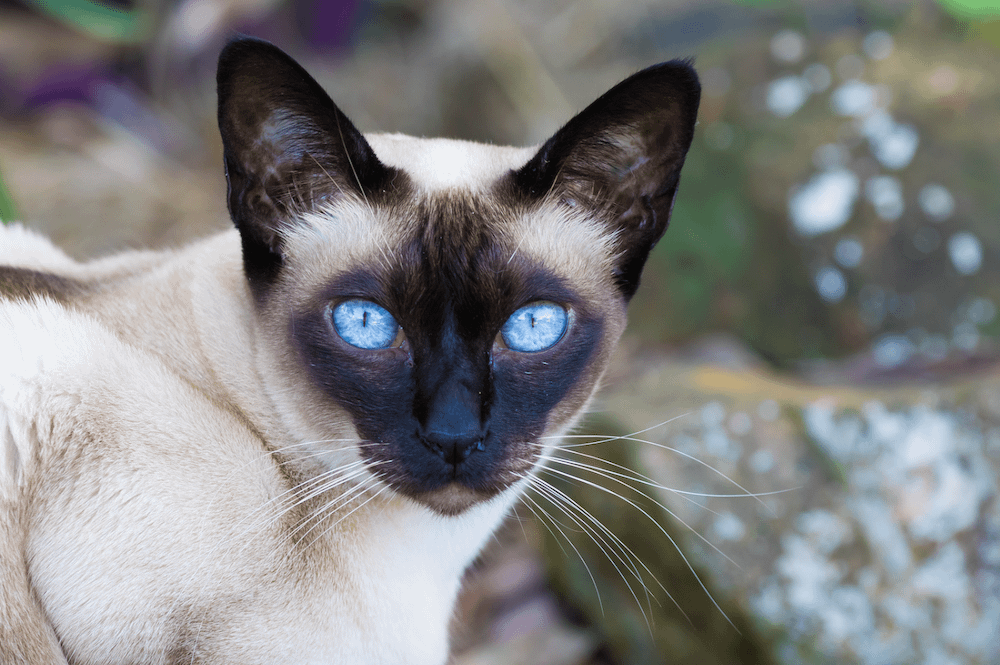
Although the Tonkinese cat breed can display several different eye colors, they are uniquely known as the first pedigreed cat with aqua-colored eyes. Their parent breeds are the Siamese and Burmese cats—and like them, they are loving, sociable, and playful felines.
Wondering if there are black cats with blue eyes? This combination of traits is rare. If you ever come across a black cat with blue eyes, consider yourself very lucky—and take a photo!
Are white cats with blue eyes deaf?
Not all white cats with blue eyes are deaf, but they are more susceptible to deafness. In fact, Cornell Feline Health Center reports that 65 to 85 percent of all-white cats with both eyes blue are deaf. (Some of these cats are deaf in only one ear, which means cat parents may never detect their cat’s deafness.) 40 percent of white cats with one blue eye and one of another color are born deaf—and the deafness occurs only in the ear on the side of the blue eye.
Cats with yellow eyes
Cats with yellow eyes are relatively common, but no less stunning—particularly when it’s a high-contrast combination like a black cat with yellow eyes (seen in the Bombay cat and mixed breeds). Yellow eyes are also common among the Burmese, Bengal, American Shorthair, and Maine Coon.
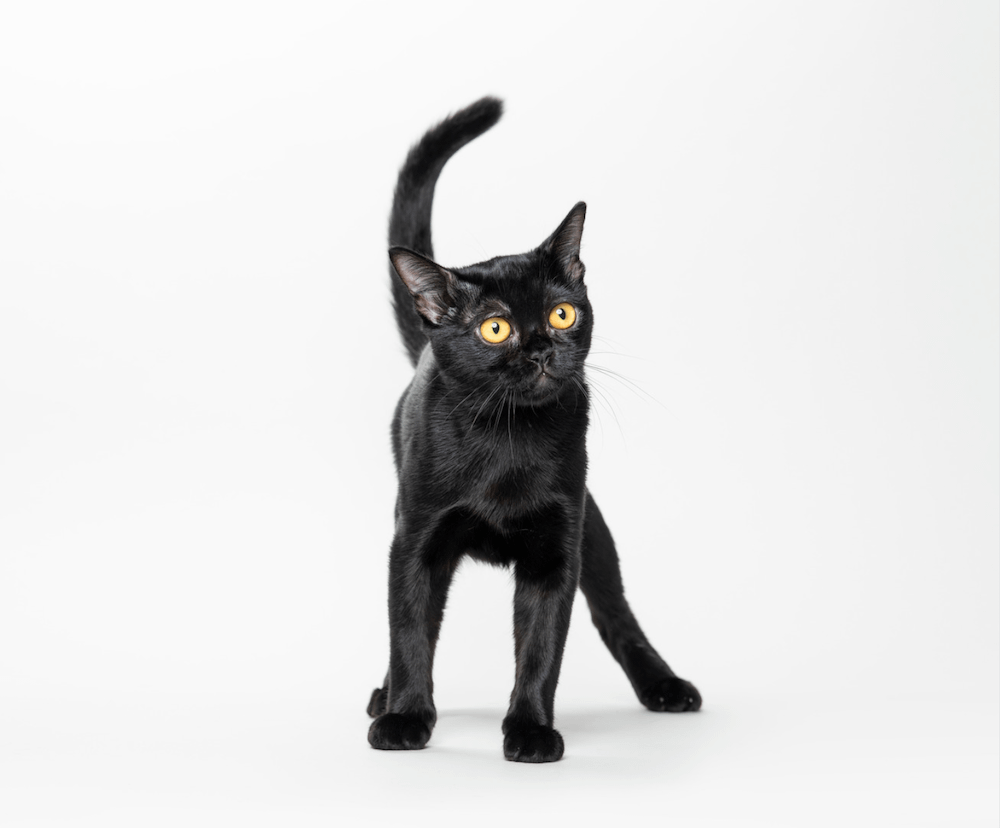
If you’re looking for a black cat with yellow eyes, look no further than the Bombay cat. This little house panther is a cross between a Burmese (more on that below) and an American Shorthair. They’re incredibly people-oriented and will follow you wherever you go—you might literally confuse one for a shadow.
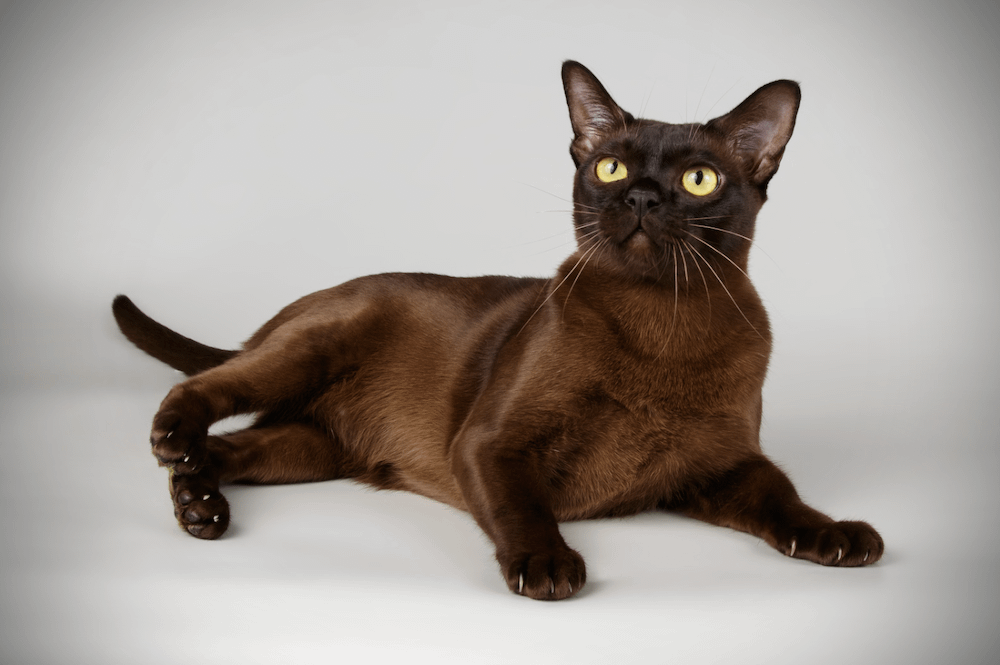
Also sporting luminous yellow eyes, the Burmese cat is known for their sleek, sable (dark brown) coat and their entertaining personality. This breed of cat was considered sacred and worshiped for centuries in temples across Burma (modern-day Myanmar) as embodiments of gods and goddesses.
Cats with green eyes
Green is another common cat eye color. A breed that often comes to mind is the grey cat with green eyes known as the Russian Blue. The Egyptian Mau is also well-known for their green gaze. Other cats with green eyes include the Somali, Bengal, American Shorthair, Norwegian Forest cat, and Abyssinian.
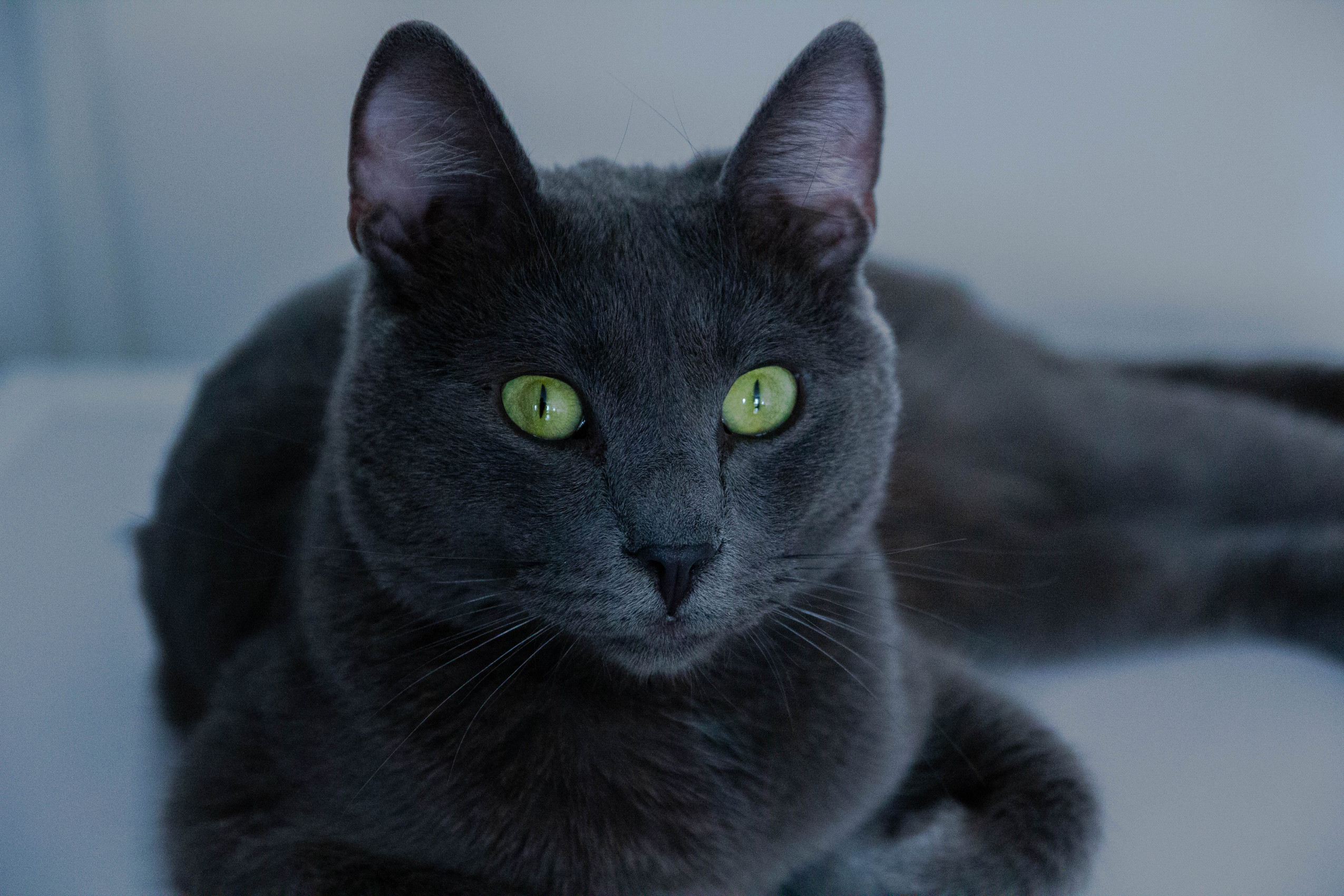
The Russian Blue cat combines striking green eyes, a luscious blue coat, and a loving yet shy personality into one amazing breed. This cat is thought to have originated in the Russian White Sea port town of Archangel Isles, or Arkhangelsk. You’ll also see many mixed Russian Blue cats with yellow-green eyes.
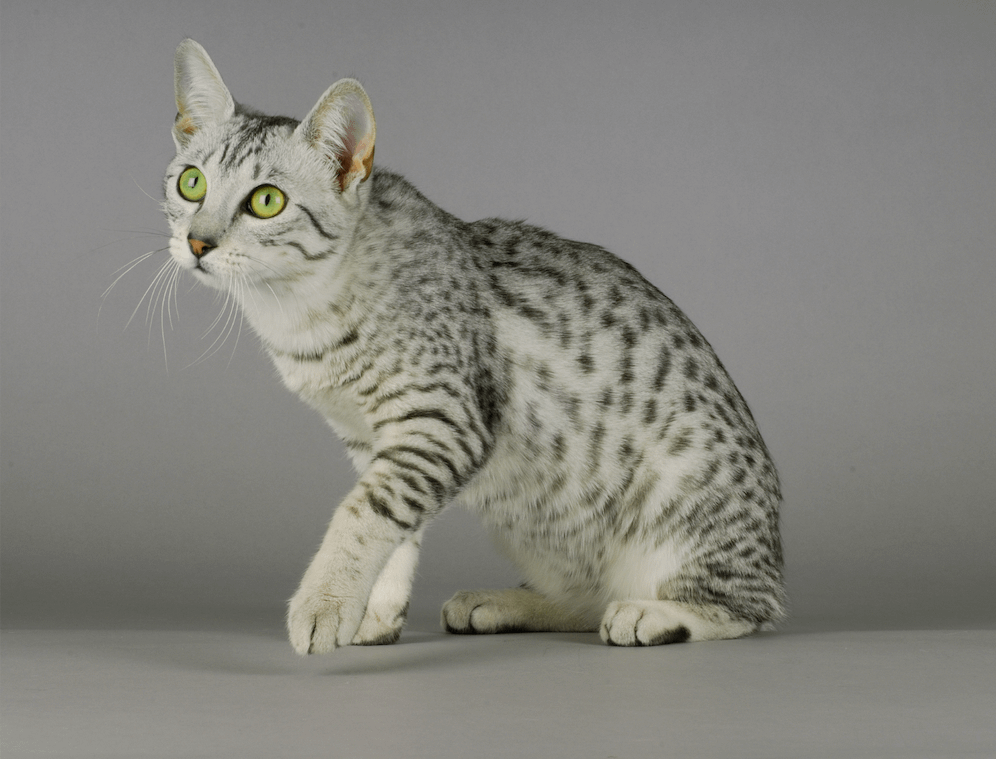
One of the oldest and fastest domesticated cat breeds, the Egyptian Mau displays unique “gooseberry green” eyes and the only naturally occurring spotted coat among natural (not man-made) cat breeds. They are active, adventurous cats that can run up to 30 miles per hour!
Cats with orange eyes
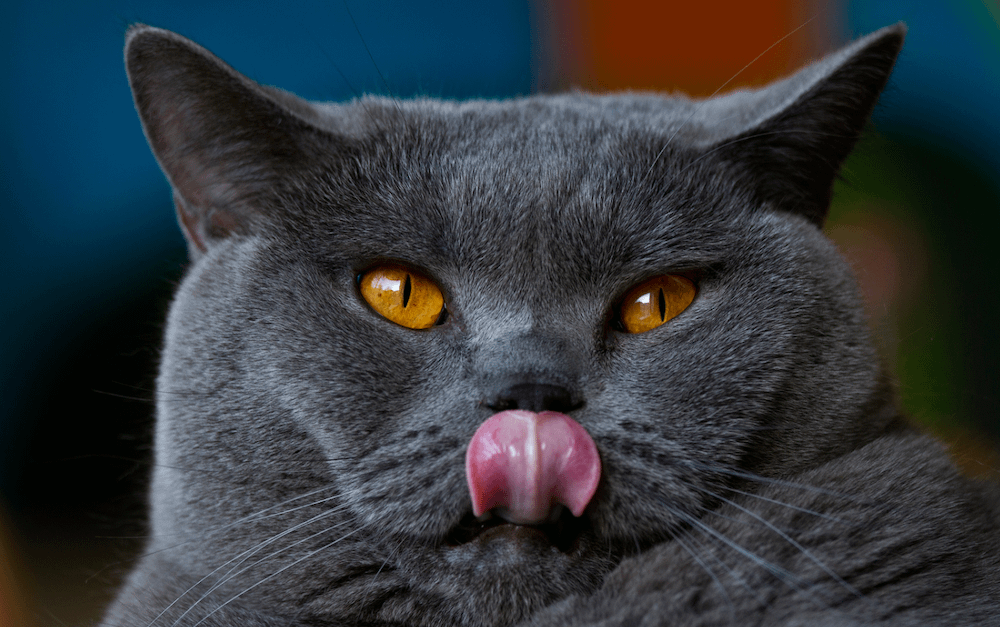
Rarer among cat eye colors is orange or amber cat eyes. The British Shorthair (pictured above) is known for their orange lamp-like gaze, while the Turkish Van is known for a softer amber hue. When people think of a black cat with orange eyes, they’re often thinking of the Bombay again (as this breed can display yellow, gold, orange, or copper eyes).
Cats with gold eyes
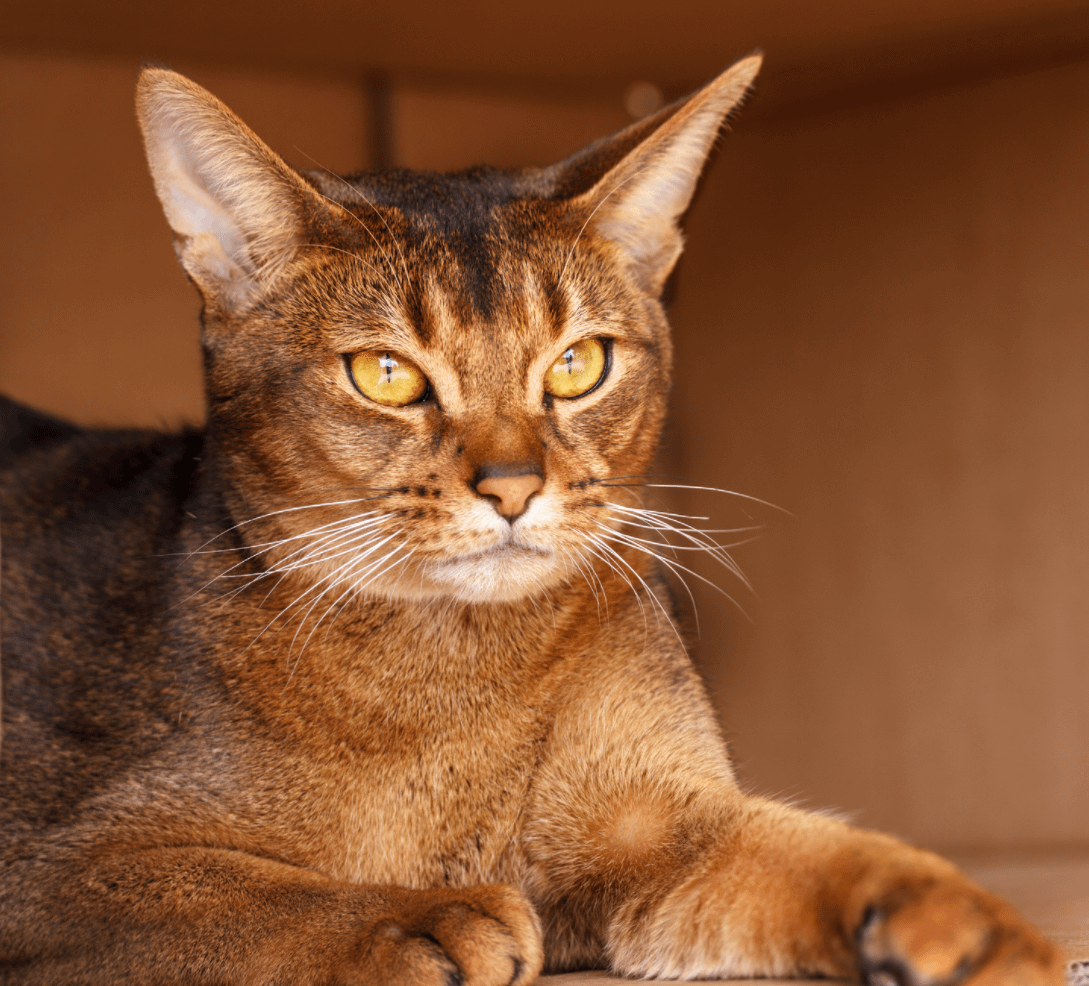
While similar to yellow eyes (indeed, many breeds cross over into both colors), cats with gold eyes have more pigment-producing cells. The Abyssinian (pictured above), Burmese, Bombay, Bengal, American Shorthair, and Somali cats are just a few breeds known to have golden eyes.
Cats with brown eyes
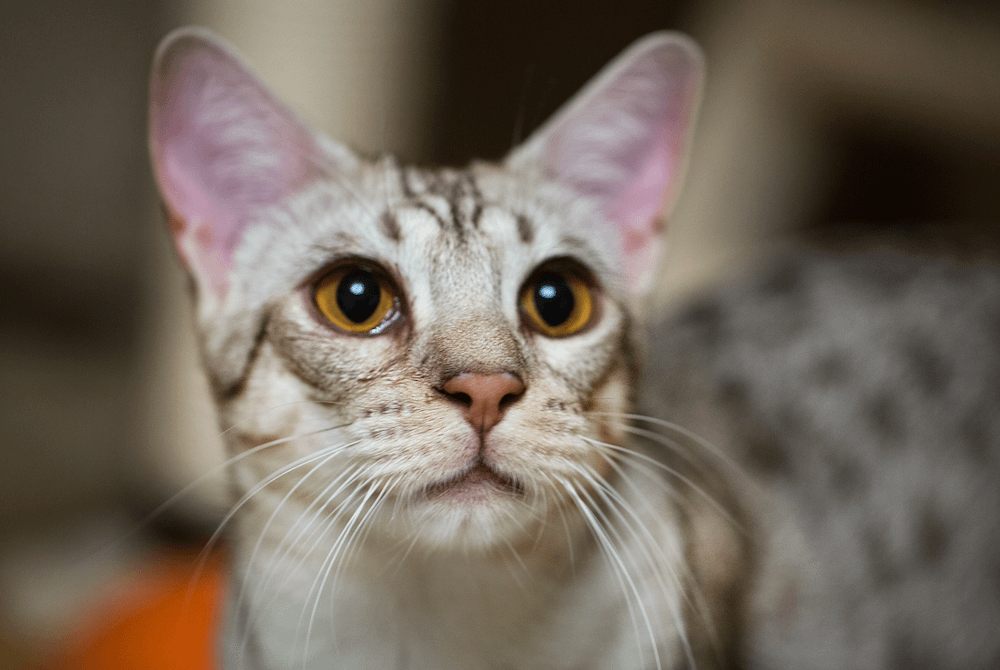
Perhaps rarest of all are cats with brown eyes. Technically cats cannot have solid brown eyes, but some will display the right amount of gold, copper, hazel, or amber to give the appearance of brown (like the Ocicat pictured above).
Cats with copper eyes
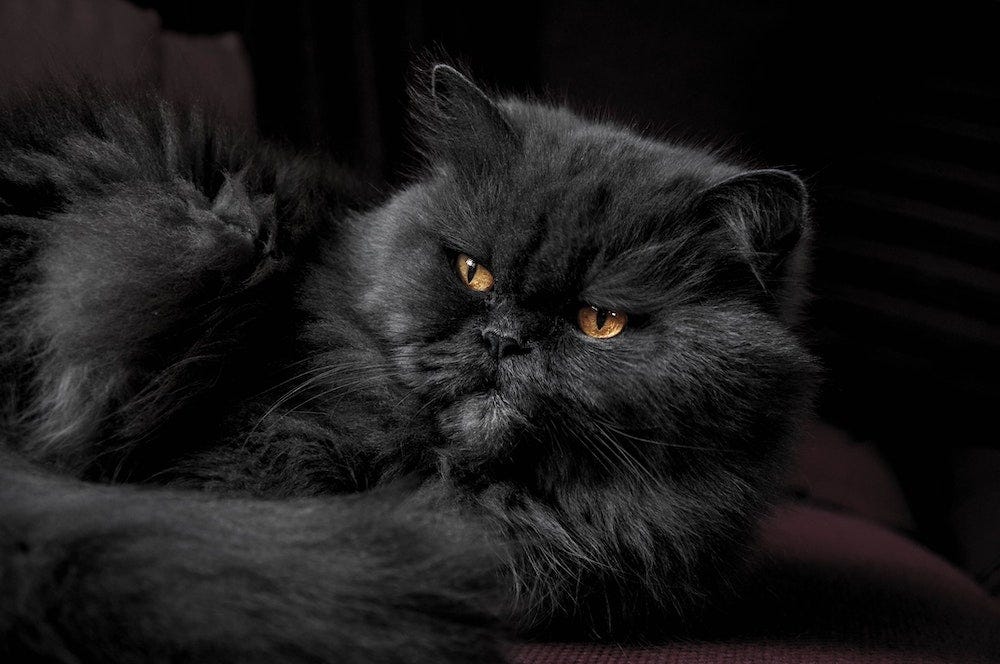
A copper-eyed cat is also somewhat uncommon, usually crossing into descriptions of orange or amber eyes. British Shorthair cats and Bombay cats, for example, may be described as having copper eyes instead of orange. The Scottish Fold, Maine Coon, and Persian (pictured above) can also display copper eyes.
Cats with hazel eyes
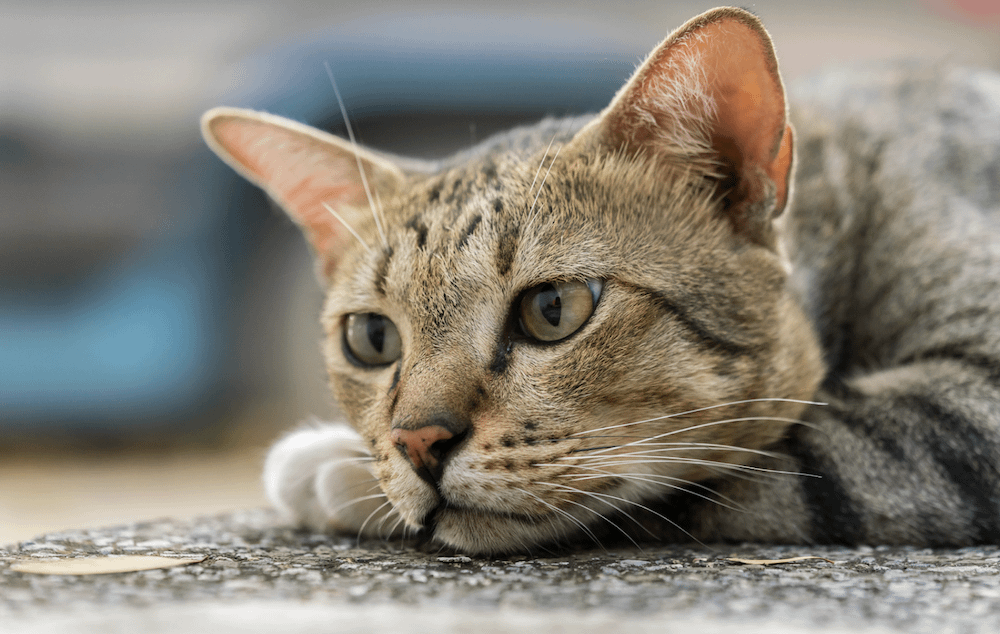
Hazel cat eyes occur commonly among mixed breeds, usually as a yellow-green hue. You’ll also see this color among purebreds like the American Shorthair (pictured above), Maine Coon, Norwegian Forest cat, and many more.
Cats with different-colored eyes

All cat eye colors are lovely, but perhaps the loveliest are the “odd-eyed” kitties with two different eye colors! As with blue-eyed cats, these cats tend to have white or mostly white fur. Also known as heterochromia eyes, this mutation is more common than you’d guess—and far more common in cats than in humans. The Turkish Angora (pictured above) and Khao Manee cat are well-known for being odd-eyed.
Rarer is “dichroic” or dichromatic eyes, which results in having two colors in one iris. (For example, there may be a yellow ring around a green iris.)
Turns out cat eye colors are as fascinating as cats themselves! No matter the hue, anyone (even those who aren’t “cat people”) can appreciate the stunning gaze of the feline. Wondering if your cat’s eye color is abnormal? Read up on common cat eye problems as seen by Dr. Justine Lee, a critical care veterinarian, toxicologist, and cat parent.
Are black cat eyes possible?
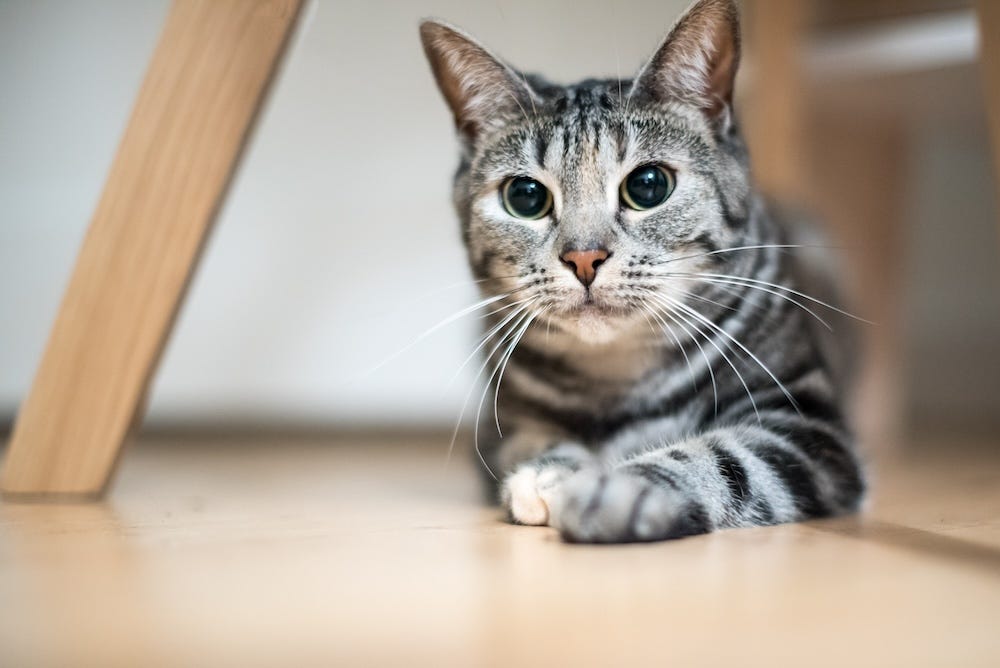
Cats have unique eyes that can sometimes appear almost entirely black, especially in certain lighting conditions. In low light, their pupils will expand to let in more light, making the eyes appear even darker.
In addition, cats have a special layer behind their retinas called the tapetum lucidum, which enhances their night vision. This layer reflects light back through the retina, giving their eyes a characteristic glowing appearance, especially in the dark. In black cats, this can make their eyes seem even more intense.
Photo credits:
- Black and white cat: Seb via Unsplash
- Siamese: Alecsander Alves via Unsplash
- Ragdoll: Husqqqy via Unsplash
- Black cat with green eyes: Simion Andreea-Marina via Unsplash
- Persian: Stefan Ivanov
- Turkish Angora: Sergey Semin via Unsplash
